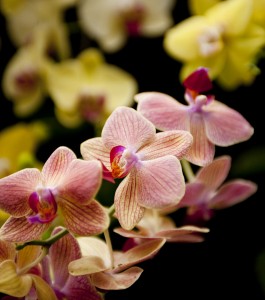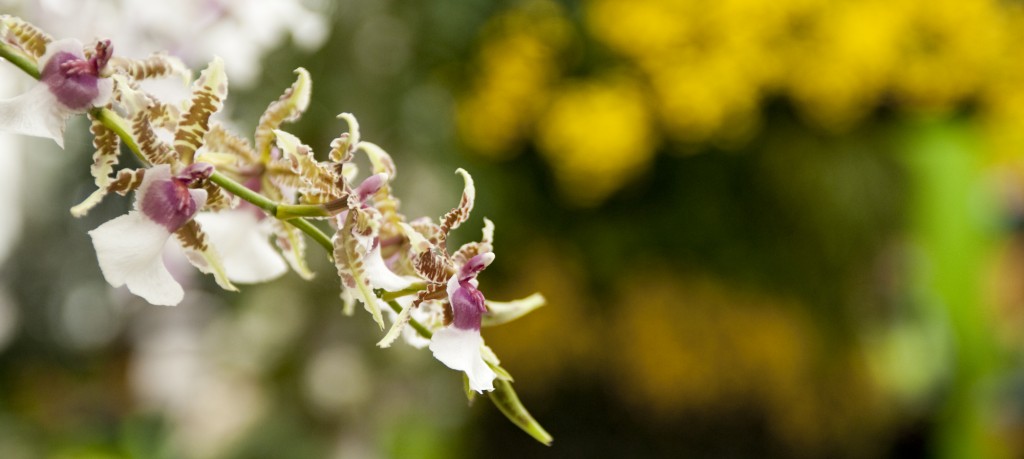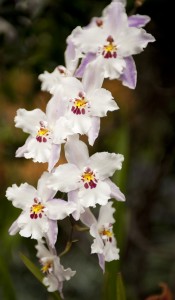Buying an Orchid
Posted in Gardening Tips, The Orchid Show on April 3 2012, by Sonia Uyterhoeven
Sonia Uyterhoeven is the NYBG‘s Gardener for Public Education.
 Last week we discussed basic orchid care and explored how to assess your home as a suitable place for growing orchids. This week we will grab our wallets and talk about buying an orchid. You may have noticed that orchids are not cheap. Their price has dropped measurably over the past decade due to tissue culture and the ability to produce orchids on a mass scale. But even with all of these advances in propagation techniques, they still command a decent price.
Last week we discussed basic orchid care and explored how to assess your home as a suitable place for growing orchids. This week we will grab our wallets and talk about buying an orchid. You may have noticed that orchids are not cheap. Their price has dropped measurably over the past decade due to tissue culture and the ability to produce orchids on a mass scale. But even with all of these advances in propagation techniques, they still command a decent price.
If you are spending between $20 and $50 on an orchid, you will probably want it to last for some time in your home. Following a few simple guidelines will help you ensure that your orchid flourishes. I am frequently asked if it matters where you purchase your orchid since this often influences the price. High-end florists and nurseries will have a better selection with many exotic and unusual varieties. Big box stores will have a limited selection of the standard fare.
In terms of the quality, the answer is an annoying “it depends.” In general, high-end florists and nurseries take better care of the orchids. They will receive proper watering, fertilizing, and light during their stay in the retail outlet. Big box stores are not as conscientious. If you go shopping in a big box store and notice that they have recently received a shipment of orchids, then by all means buy one. They all essentially come from the same growers so the quality is fairly standard. If, on the other hand, you are looking at something that is left over and on sale in a big box store then it should be viewed as an experiment.
Let’s think about transportation. I once saw a woman walking down the street in Manhattan in the middle of March. She had a moth orchid (Phalaenopsis) in one hand and a crying toddler was monopolizing her other. I stopped her and mentioned that the orchid was a tropical plant that would get damaged if it wasn’t covered on the cool spring day. She gave me a dirty look. In that situation, the whimpering child understandably won.

I see many people walking around with unprotected orchids during the early spring. If subjected to too much cold for too long the orchid will protest by dropping its flowers or, in extreme situations, may suffer from frostbite (its foliage will blacken and turn mushy). If the vendor doesn’t wrap the orchid for you, request it. It doesn’t have to be anything fancy. Presumably you will not be spending long outside, but if you are transporting it on a bus, in a drafty car or walking down the street, a simple wrapping with florist paper will make a world of difference.
Once you get home, remember to keep your newcomer separate from your other houseplants for about three weeks. Observe your orchid and make sure that it doesn’t suffer from any insect or disease problems. The normal response when purchasing an orchid is to admire its flowers and make decisions based on the color and size of the bloom. It is equally important to examine the foliage. Turn the leaves over and check the underside for the presence of insects. Make sure the foliage looks healthy, otherwise you could be unwittingly investing in Typhoid Mary.
 Your orchid will undoubtedly be in flower when you buy it. Do not place it near a heat source or in a hot, sunny location. Flowers will last longer if they are not placed in direct sun, either. Instead, place it in a location that is on the cooler side; anything under 75 F is fine. You should also remember not to place your flowering orchid near a fruit bowl–it may create a magnificent centerpiece, but fruits emit an ethylene gas that accelerates the aging process in flowers.
Your orchid will undoubtedly be in flower when you buy it. Do not place it near a heat source or in a hot, sunny location. Flowers will last longer if they are not placed in direct sun, either. Instead, place it in a location that is on the cooler side; anything under 75 F is fine. You should also remember not to place your flowering orchid near a fruit bowl–it may create a magnificent centerpiece, but fruits emit an ethylene gas that accelerates the aging process in flowers.
Finally, your orchid will require watering when it is in bloom to keep the roots, foliage, and flowers hydrated. Most orchids appreciate an occasional misting, but it is inadvisable to mist or get water on the flowers. If you do, you will notice signs of water damage. Persistent moisture can result in the flowers becoming spotted with a fungal disease.
The most important thing to remember is that in the matter of a few weeks, your orchid has moved from the pampered greenhouse environment of the grower to the variable conditions of a retail store, and finally into your home. It is probably suffering from jet lag and will need some time to settle down in your home. Start a regular watering routine that reflects the needs of the specific orchid and don’t rush in to fertilize until it settles in. If you give it time to adjust to the lower levels of light and humidity, it will be fine.
The Orchid Show runs between now and April 22, with a well-stocked schedule of lectures, workshops, and intimate evening events to keep you busy. Be sure to reserve tickets!


Hey,
Love the blog, you def have a new follower.
I was wondering if you knew what kind of plants are good for heavily shaded gardens? we have a tiny tiny city garden, but it is surrounded by big oak trees which i suspect are sucking the life out of everything, couple that with it not getting an ounce of sun and me being a complete novice, i’ve no idea what to plant in there, everything from last year died.
thanks for your help!!
door251.com